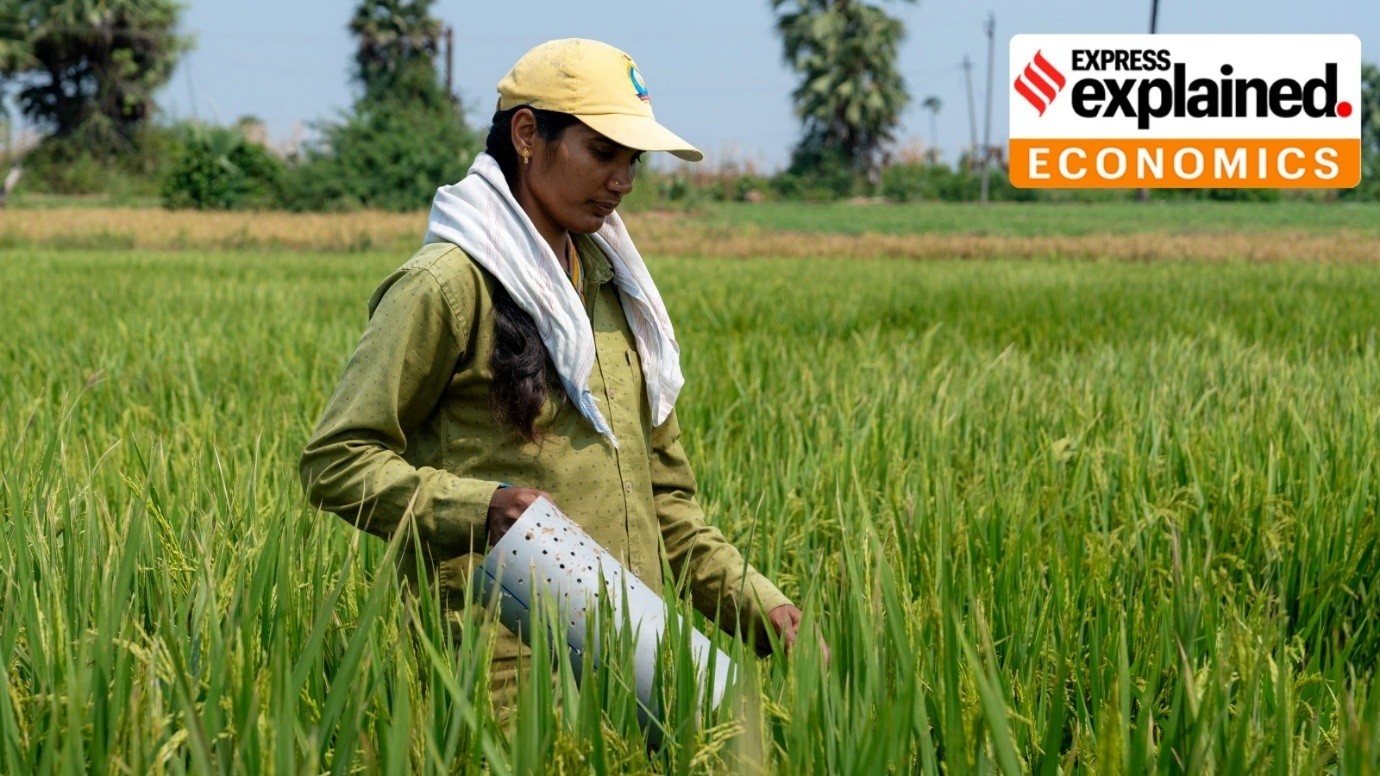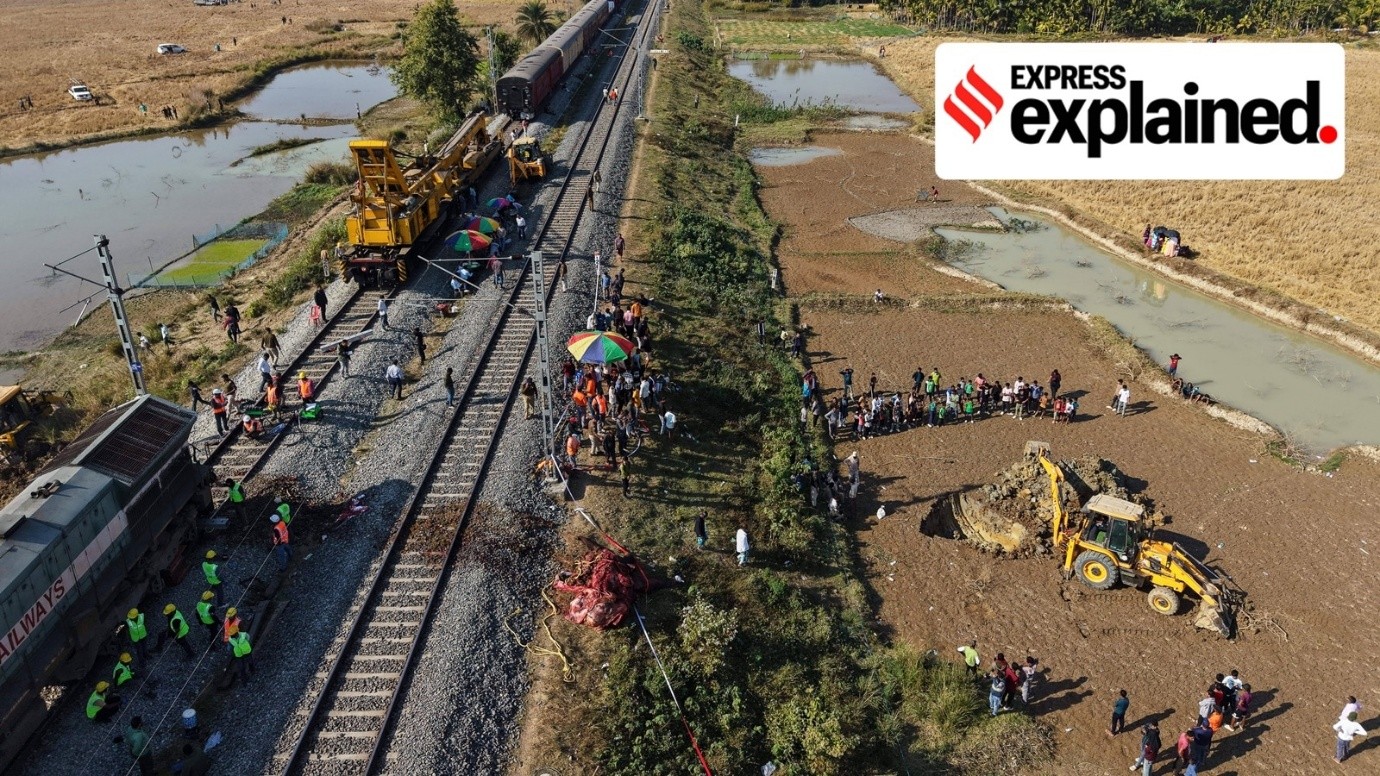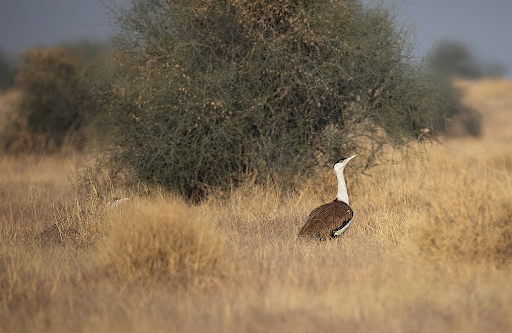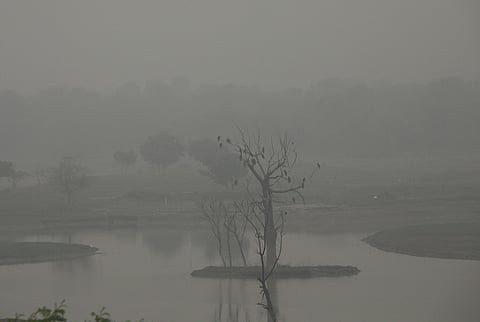




Source: ETVBHARAT
Disclaimer: Copyright infringement not intended.
In a recent instance of man-animal conflict four people were injured in a bear attack in the Kawardha range of the Bhoramdev Wildlife Sanctuary.
|
Feature |
Details |
|
State |
Chhattisgarh |
|
District |
Kawardha (Kabirdham) |
|
Geographical Zone |
Lies in the Maikal range of the Satpura hills |
|
Area Covered |
Approx. 352 sq. km |
|
Altitude |
Undulating terrain with dense forests and streams |
|
Nearby Landmark |
Named after the Bhoramdeo Temple, over 1000 years old, dedicated to Lord Shiva |
Bhoramdeo Temple:
Known as the Khajuraho of Chhattisgarh for its erotic temple sculptures.
Over 1,000 years old built during the Nagas dynasties.
Reflects the cultural confluence of tribal and classical Indian architecture.
Vegetation:
|
Forest Type |
Details |
|
Tropical Moist Deciduous |
Saaj, Sal trees |
|
Dry Deciduous Forests |
Tendu, Mahua, Bamboo, Nilgiri |
Key Fauna:
|
Species Category |
Examples |
|
Big Mammals |
Tiger, Leopard, Sloth Bear, Indian Gaur (Bison) |
|
Ungulates |
Chital (Spotted Deer), Sambar, Nilgai, Wild Boar |
|
Birds |
Peafowl, Jungle Fowl, Hornbills, Owls, Raptors |
|
Reptiles |
Python, Monitor Lizard, various snakes |
|
River |
Detail |
|
Fen River |
Originates in the sanctuary |
|
Sankari River |
Another important river originating here |
Part of Kanha–Achanakmar Wildlife Corridor:
Connects Kanha National Park (Madhya Pradesh) to Achanakmar Wildlife Sanctuary (Chhattisgarh).
Essential for the free movement of tigers and other large mammals.
Important for genetic exchange and long-term conservation.
|
S.No. |
Wildlife Sanctuary |
District |
Year of Establishment |
Area (km²) |
Key Features |
|
1 |
Achanakmar WLS |
Bilaspur/Mungeli |
1975 |
551.55 |
Part of Achanakmar-Amarkantak Biosphere Reserve; rich biodiversity |
|
2 |
Badalkhol WLS |
Jashpur |
1975 |
104.45 |
Located in Ramgarh Hills; tiger corridor between Achanakmar TR & Palamau TR |
|
3 |
Barnawapara WLS |
Balodabazar |
1976 |
244.66 |
Bounded by Mahanadi and Jonk rivers; diverse flora and fauna |
|
4 |
Bhairamgarh WLS |
Bijapur |
1983 |
138.95 |
Separated from Indravati NP by Indravati River; habitat for wild Asian buffalo |
|
5 |
Bhoramdev WLS |
Kawardha |
2001 |
352 |
Tiger corridor in Maikal Hills; connects Kanha TR (MP) and Achanakmar TR |
|
6 |
Gomarda WLS |
Raigarh |
1975 |
277.91 |
Known for its diverse ecosystem and rich biodiversity |
|
7 |
Pamed WLS |
Bijapur |
1985 |
262.12 |
Located in Dantewada district; habitat for wild buffalo |
|
8 |
Semarsot WLS |
Balrampur |
1978 |
430.35 |
Rich in biodiversity; important for conservation efforts |
|
9 |
Sitanadi WLS |
Dhamtari |
1974 |
553.36 |
Sitanadi River flows through; part of Udanti-Sitanadi Tiger Reserve |
|
10 |
Tamor Pingla WLS |
Surguja |
1978 |
608.51 |
Largest WLS in Chhattisgarh; part of Guru Ghasidas National Park |
|
11 |
Udanti WLS |
Gariaband |
1985 |
237.27 |
Udanti River flows through; part of Udanti-Sitanadi Tiger Reserve |
Sources:
|
PRACTICE QUESTION Q. Which of the following rivers originate from the Bhoramdev Wildlife Sanctuary?
A. 1 and 2 only Answer: A. Explanation: Both Fen and Sankari rivers originate within the sanctuary. The Hasdeo River originates in the Koriya district of Chhattisgarh, while the Indravati River originates in the Kalahandi district of Odisha. |






© 2026 iasgyan. All right reserved